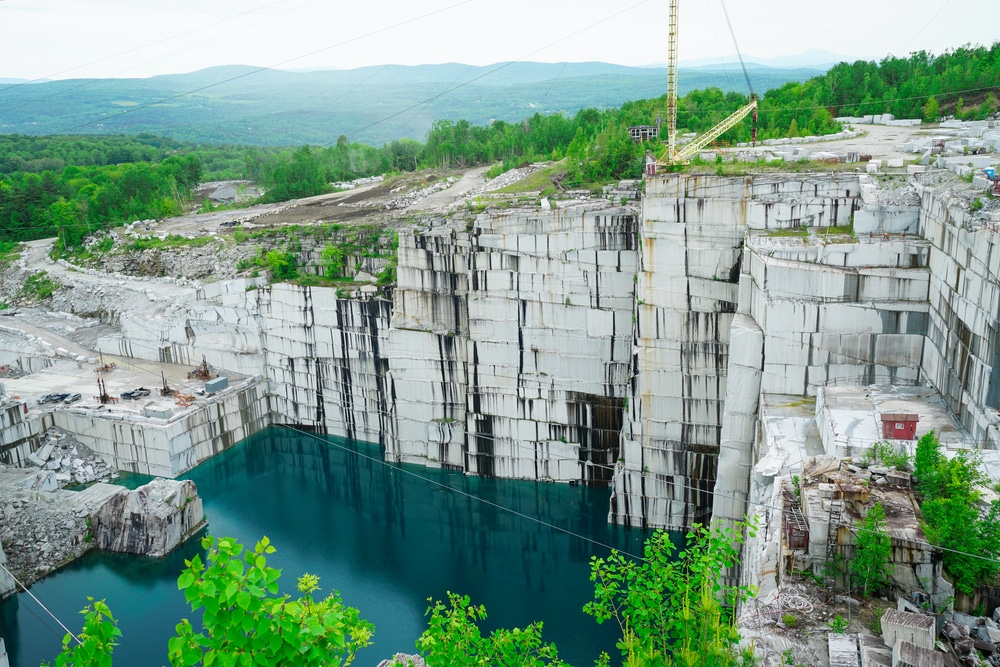Discovering the Rich History and Sustainable Practices of Granite Quarrying
As we base on the precipice of uncovering the intricate tapestry of granite quarrying, a journey through time reveals not just the physical act of removing rock however additionally the social and historical importance woven right into the extremely fabric of this method. From the ancient beginnings that laid the structure for contemporary quarrying techniques to the lasting methods that are forming the future of this industry, each sculpt mark on granite surfaces narrates waiting to be discovered (granite quarries in south africa). The heritage of granite quarrying stretches much past mere removal; it is a testament to human ingenuity, strength, and the enduring appeal of this magnificent rock
Ancient Origins of Granite Quarrying
Going back to ancient worlds, the technique of quarrying granite has actually been an important component of human history and architectural improvement. The earliest proof of granite quarrying go back to old Egypt, where enormous pyramids and detailed sculptures were crafted from this durable rock. The Egyptians utilized primitive tools to draw out granite blocks from quarries, showcasing the value of this product in their monumental building and constructions.
Moving on in background, the Greeks also made considerable payments to the quarrying of granite. The Greeks utilized granite in numerous architectural wonders, such as holy places and statuaries, showing their skill in shaping and carving this durable stone. The Romans even more fine-tuned the methods of quarrying granite, utilizing advanced tools like blades and hammers to remove and shape granite for their renowned frameworks.
Via the centuries, the practice of quarrying granite has advanced, with contemporary technologies enhancing performance while preserving the timeless allure of this all-natural stone - granite quarries in south africa. From old civilizations to modern home builders, the legacy of granite quarrying remains to form our globe
Advancement of Quarrying Methods
The advancement of quarrying techniques has actually been marked by a constant progression towards higher performance and accuracy in extracting granite. From the simple techniques used by our forefathers to the sophisticated technologies utilized in modern-day quarrying operations, the sector has actually undertaken substantial innovations. Early quarrying strategies entailed hand-operated labor with basic tools such as knives, hammers, and wedges to draw out granite blocks from the planet. As human beings progressed, strategies like fire-setting and primitive explosives were introduced to assist in the removal process.
Advancements in computer-controlled equipment and 3D modeling have actually maximized quarrying operations, leading to marginal environmental influence and enhanced sustainability methods. As the demand for granite continues to rise, the development of quarrying strategies continues to be important to meeting sector check here needs successfully and sustainably.
Cultural Value of Granite
Granite holds an extensive cultural value throughout different worlds due to its enduring presence in building work of arts and revered monoliths. The cultural relevance of granite extends beyond its physical features; it symbolizes resilience, security, and eternity, making it a symbol of sustaining traditions and customs.

Lasting Practices in Quarrying
In the middle of the rich history of granite quarrying and its cultural importance exists an expanding focus on lasting practices within the market. As environmental recognition and concerns about resource exhaustion have enhanced worldwide, the quarrying market has increasingly accepted lasting approaches to decrease its effect on the environment and surrounding areas.

Furthermore, recovery and rehabilitation of quarry sites post-extraction are integral to lasting techniques. By restoring quarried areas to an all-natural or valuable state, such as developing wild animals environments or entertainment spaces, quarriers can counter the environmental footprint of their operations and contribute positively to the neighborhood ecological community.
Heritage of Granite Quarrying
With a historic backdrop soaked in workmanship and industrial development, what withstanding impact has granite quarrying left redirected here on the landscape of modern culture? The heritage of granite quarrying transcends mere removal techniques; it has formed building a fantastic read wonders, urban landscapes, and cultural heritage worldwide. The long lasting nature of granite has actually made it a favored choice for monoliths, buildings, and infrastructure, standing as a testimony to the ability and creativity of quarry workers across generations.
Additionally, the financial footprint of granite quarrying can not be ignored. The industry proceeds to give work chances and drive neighborhood economies in regions where granite removal is prevalent. It has actually also stimulated technological advancements in quarrying methods and equipment, leading to more efficient and lasting practices.
In regards to sustainability, the legacy of granite quarrying consists of initiatives to mitigate ecological impacts via recovery tasks and accountable source monitoring. By balancing economic interests with environmental stewardship, the sector makes every effort to make certain that future generations can remain to gain from this long-lasting natural deposit.
Verdict
